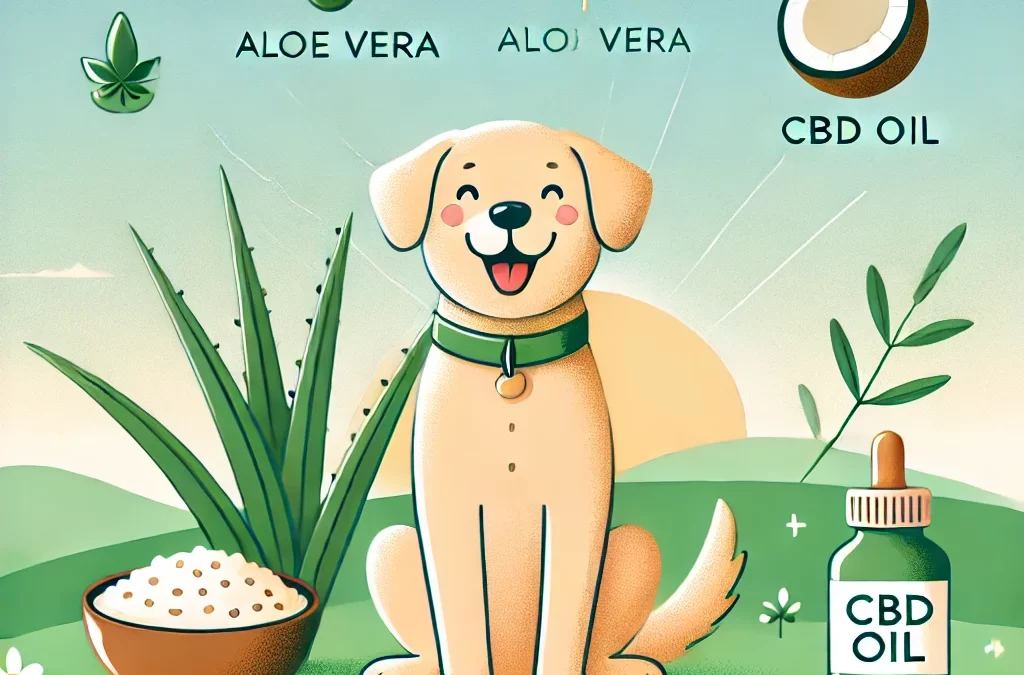
por TCMVET | 28 de out de 2024 | Alimentação e Saúde
A proteína é um dos nutrientes mais essenciais na dieta do seu cão. Cada célula do corpo do seu cão contém proteína, que é crucial para construir e manter a pele, o pelo, os músculos, os órgãos e vários tecidos. Uma dieta rica em proteína de qualidade ajuda os cães a crescerem fortes e a permanecerem saudáveis ao longo de suas vidas.
Por que a proteína é essencial para cães
- Construindo e Reparando Células – A proteína atua como um elemento fundamental para o crescimento e reparo celular. Não importa se o cão é jovem, está crescendo ou se recuperando de uma lesão, a proteína ajuda a reparar células danificadas e gerar novas, mantendo o corpo resiliente.
- Apoiando a força muscular – A proteína é essencial para o desenvolvimento e manutenção muscular. Músculos fortes são essenciais para a mobilidade geral, resistência e até mesmo a saúde das articulações, pois eles dão suporte ao corpo do seu cão durante as atividades diárias.
- Vital para o crescimento e gravidez – Para filhotes e cadelas prenhas, a ingestão de proteína é especialmente importante. Ela suporta rápido crescimento e desenvolvimento, garantindo que os filhotes tenham os nutrientes de que precisam para ossos, músculos e órgãos fortes à medida que amadurecem.
Escolhendo fontes de proteína de alta qualidade
Ao selecionar comida para cachorro, é importante ler o rótulo para garantir que a proteína seja um dos primeiros ingredientes listados. Ingredientes como frango, carne bovina, cordeiro e peixe são excelentes fontes de proteína de alta qualidade que fornecem os aminoácidos necessários para a saúde do seu cão. Alimentos com “refeições de carne” ou “subprodutos” podem ser de qualidade inferior; portanto, opte por marcas que listam carne de verdade como ingrediente principal.
Quanta proteína seu cão precisa?
A necessidade ideal de proteína varia de acordo com a idade, tamanho e nível de atividade. Por exemplo, cães altamente ativos ou aqueles envolvidos em treinamento de agilidade podem exigir maior ingestão de proteína para dar suporte ao reparo muscular e às necessidades energéticas. Filhotes, devido às suas demandas de crescimento, e cães idosos, que precisam de suporte para manter a massa muscular, também se beneficiam de níveis equilibrados de proteína. Consultar seu veterinário pode ajudar a determinar a quantidade certa de proteína para as necessidades específicas do seu cão.
Benefícios de uma dieta rica em proteínas para cães
Uma dieta rica em proteínas de qualidade oferece inúmeros benefícios à saúde dos cães, incluindo:
- Músculos fortes e magros – A proteína ajuda a manter a massa muscular magra, promovendo força e mobilidade geral.
- Pele e pelagem saudáveis – A proteína promove uma pele saudável e uma pelagem brilhante, mantendo o pelo do seu cão macio e forte.
- Melhor função imunológica – Proteína adequada reforça o sistema imunológico do cão, ajudando a combater infecções e doenças de forma mais eficaz.
- Níveis de energia ideais – A proteína fornece a energia necessária para cães ativos, permitindo que eles permaneçam brincalhões e cheios de energia.
Garantir que seu cão receba uma dieta rica em proteínas é fundamental para sua saúde e bem-estar. Desde construir músculos fortes até sustentar uma pelagem brilhante e aumentar a energia, a proteína desempenha um papel crucial na vida do seu cão. Procure fontes de proteína de alta qualidade nos rótulos dos alimentos e considere as necessidades únicas do seu cão para ajudá-lo a prosperar.

por TCMVET | 28 de out de 2024 | Alimentação e Saúde
Uma pelagem brilhante e bem cuidada é frequentemente o primeiro indicador da saúde geral de um cão. Para donos de animais de estimação, não é apenas esteticamente agradável, mas também um sinal de que a dieta do seu cão fornece os nutrientes essenciais necessários para a saúde ideal da pele e da pelagem. Entre esses nutrientes, os principais são os ácidos graxos ômega-3 e ômega-6, que ajudam a manter uma pelagem forte e brilhante e uma pele saudável.
Ácidos graxos ômega e seu papel na saúde canina
- Ácidos graxos ômega-6 – Ômega-6s são essenciais para cães, apoiando a função celular saudável, hidratação e resiliência contra fatores externos. Eles desempenham um papel significativo na umidade da pele, o que se traduz em menos ressecamento e descamação. Sem ômega-6s adequados, a pele de um cão pode ficar seca e propensa a irritação, levando a pelos opacos e quebradiços, propensos a quebra.
- Ácidos gordurosos de omega-3 – Os ômega-3 fornecem propriedades anti-inflamatórias que são particularmente benéficas para cães com pele sensível ou propensos a alergias. Esses ácidos graxos ajudam a reduzir coceira, vermelhidão e irritação ao acalmar a inflamação na pele. Os ômega-3 são especialmente úteis durante os meses de inverno, quando os baixos níveis de umidade podem contribuir para a pele seca e o desconforto.
Benefícios dos ácidos graxos ômega balanceados para cães
Quando incluídos em proporções equilibradas, os ácidos graxos ômega-3 e ômega-6 contribuem para:
- Um casaco brilhante – Os ácidos graxos ômega ajudam a manter a pele nutrida, reduzindo o ressecamento e garantindo que o pelo cresça com um brilho saudável. Isso resulta em uma pelagem lisa, brilhante e com menos probabilidade de cair excessivamente.
- Inflamação e coceira reduzidas – Cães com alergias ou pele sensível se beneficiam dos efeitos anti-inflamatórios dos ômega-3, que ajudam a reduzir sintomas comuns como coceira, vermelhidão e irritação.
- Cabelo mais forte e queda reduzida – Uma pele saudável e hidratada promove um forte crescimento dos pelos, tornando-os menos propensos à quebra e queda. Uma ingestão equilibrada de ácidos graxos garante que os pelos permaneçam ancorados e vibrantes.
Fontes naturais de ácidos graxos ômega para cães
Muitos alimentos de alta qualidade para cães incluem ácidos graxos ômega em suas fórmulas, provenientes de ingredientes como óleo de peixe, semente de linhaça e gordura de frango. Esses ingredientes fornecem uma maneira natural de apoiar a saúde da pele e do pelo sem aditivos artificiais. Além disso, suplementos como óleo de peixe ou óleo de salmão podem ser adicionados à dieta do seu cão para aumentar a ingestão de ômega-3, especialmente para cães com condições específicas de pele.
Como escolher alimentos ricos em ômega
Ao selecionar alimentos ou suplementos para cães, procure produtos que listem ácidos graxos ômega-3 e ômega-6 no rótulo. É essencial escolher marcas que usem fontes naturais, pois elas são melhor absorvidas e mais eficazes na promoção da saúde geral da pele e do pelo. Consultar seu veterinário também pode ajudar a garantir o equilíbrio certo de ácidos graxos, especialmente se seu cão tiver problemas específicos de pele.
A saúde da pelagem de um cão é mais do que apenas superficial. Ao incluir um equilíbrio adequado de ácidos graxos ômega-3 e ômega-6 na dieta do seu cão, você pode manter a pele saudável, reduzir a inflamação e promover uma pelagem brilhante e bonita. Fornecer essa base nutricional ajuda a manter seu cão com a melhor aparência e sensação o ano todo.

por TCMVET | 28 de out de 2024 | Alimentação e Saúde
Garantir que seu cão receba uma dieta balanceada é fundamental para manter sua saúde, energia e felicidade. Os cães, assim como os humanos, dependem de uma variedade de nutrientes essenciais, como proteínas, carboidratos, gorduras, vitaminas, minerais e água. Cada um desses nutrientes desempenha um papel específico, desde o fornecimento de energia até a prevenção de doenças. Ao entender essas necessidades nutricionais, os donos de animais de estimação podem fazer escolhas informadas para o bem-estar de seus animais de estimação.
As necessidades nutricionais variam de acordo com a idade e a saúde
Assim como os humanos têm diferentes necessidades alimentares ao longo da vida, os cães também. Filhotes, por exemplo, requerem mais proteína para alimentar seu crescimento, enquanto cães adultos precisam de um equilíbrio estável de todos os nutrientes para manter a saúde e a energia. Dietas especialmente formuladas para cães idosos também estão disponíveis, com foco em digestão mais fácil e suporte às articulações. Além disso, alguns alimentos para cães abordam problemas de saúde específicos, como sensibilidades da pele, problemas digestivos ou alergias.
Nutrientes essenciais e seus benefícios para cães
- Proteínas – Proteínas são vitais para o crescimento muscular, reparo de tecidos e suporte imunológico. Cães ativos se beneficiam muito da proteína, pois ela auxilia na manutenção muscular e na energia.
- Gorduras – As gorduras são uma fonte concentrada de energia, apoiando a saúde do cérebro, da pele e de um pelo brilhante. Ácidos graxos essenciais como ômega-3 e ômega-6 são conhecidos por reduzir a inflamação, apoiar a saúde das articulações e melhorar o sistema imunológico.
- Carboidratos – Carboidratos fornecem energia para atividades diárias, especialmente para cães energéticos. Fibras de carboidratos também promovem a saúde digestiva, prevenindo problemas comuns como constipação ou inchaço.
- Vitaminas e Minerais – Vitaminas e minerais essenciais, como cálcio e vitamina E, dão suporte à força óssea, proteção celular e função muscular e nervosa. Esses nutrientes são necessários em pequenas quantidades, mas são integrais ao bem-estar geral do seu cão.
- Água – A água é frequentemente o nutriente mais negligenciado, mas é crucial para manter as funções corporais. Um cão bem hidratado terá melhor digestão, circulação e regulação de temperatura.
Escolhendo uma comida para cães que atenda às necessidades do seu animal de estimação
Selecionar a comida certa significa considerar a idade, o tamanho, o nível de atividade e quaisquer condições de saúde do seu cão. Ler os rótulos dos ingredientes e escolher produtos com ingredientes de alta qualidade, como carne de verdade e fontes naturais de vitaminas, ajuda a fornecer nutrição ideal. Se o seu cão tem necessidades especiais, consulte um veterinário para encontrar uma dieta que suporte seus objetivos de saúde exclusivos.
Dicas para manter uma dieta equilibrada
Manter uma dieta balanceada também envolve evitar superalimentação ou guloseimas excessivas, pois isso pode levar ao ganho de peso e desequilíbrios nutricionais. Check-ups veterinários regulares são importantes para ajustar a dieta conforme as necessidades do seu cão mudam, especialmente à medida que ele envelhece.
Uma dieta equilibrada e rica em nutrientes é a base da boa saúde e longevidade para cães. Da energia essencial fornecida por proteínas e gorduras ao poder de combate a doenças de vitaminas e minerais, cada nutriente contribui para o bem-estar do seu cão. Ao escolher uma dieta que se alinhe às necessidades específicas do seu animal de estimação, você pode ajudá-lo a levar uma vida vibrante e saudável.

por TCMVET | 25 de out de 2024 | Alimentação e Saúde
Quando um cão está lidando com um tumor, suas demandas de energia aumentam significativamente, tornando os ajustes dietéticos essenciais para sua saúde. Uma dieta cuidadosamente planejada pode dar suporte à função imunológica do seu cão, manter a massa muscular e manter os níveis de energia equilibrados. Aqui estão algumas diretrizes dietéticas que podem beneficiar cães com tumores.
1. Alta densidade nutricional
Cães com tumores frequentemente apresentam consumo de energia maior do que o normal devido aos esforços do corpo para combater as células cancerígenas. Isso requer uma dieta rica em alimentos ricos em nutrientes e de fácil digestão. A densidade nutricional garante que seu cão esteja recebendo vitaminas, minerais e energia essenciais sem sobrecarregar seu sistema com calorias vazias. Alimentos ricos em nutrientes são essenciais, pois fornecem a energia e os nutrientes necessários em porções menores e mais fáceis de administrar.
Alimentos recomendados: Carnes magras, ovos, vísceras (como fígado) e vegetais verdes.
2. Evite carboidratos altos
Como as células tumorais usam principalmente glicose para energia, reduzir a ingestão de carboidratos é crucial. Os carboidratos se convertem em glicose no corpo, o que alimenta o crescimento do tumor. Ao limitar os carboidratos, você pode potencialmente desacelerar o crescimento das células tumorais e diminuir o suprimento de energia do qual as células cancerígenas dependem.
Substituições recomendadas: Em vez de alimentos ricos em carboidratos, como grãos e vegetais ricos em amido, opte por folhas verdes, proteínas magras e gorduras saudáveis.
3. Aumente as gorduras e proteínas de qualidade
Gorduras e proteínas são componentes cruciais de uma dieta favorável ao câncer para cães. Gorduras saudáveis, como as encontradas no óleo de peixe e no óleo de coco, fornecem energia sustentada e apoiam a função imunológica. Enquanto isso, proteínas de alta qualidade são essenciais para manter a massa muscular e o peso corporal, que podem se deteriorar rapidamente em cães com tumores. As proteínas também ajudam o corpo a reparar tecidos e produzir hormônios essenciais para a saúde imunológica.
Fontes recomendadas de gorduras e proteínas saudáveis:
- Gorduras Saudáveis: Óleo de coco, óleo de peixe, óleo de linhaça
- Proteínas de alta qualidade: Frango, peru, carne bovina magra, peixe e ovos
Considerações finais
Consulte um veterinário ou um nutricionista canino para personalizar uma dieta que atenda às necessidades específicas do seu cão. Faça a transição lentamente para evitar problemas digestivos e monitore a resposta dele às mudanças na dieta. Com o plano nutricional certo, você pode dar suporte à saúde geral do seu cão e melhorar sua qualidade de vida, mesmo que ele enfrente desafios de saúde.

por TCMVET | 16 de out de 2024 | Alimentação e Saúde
Erupções cutâneas em cães são mais comuns do que você imagina, e podem variar de irritações leves a condições graves de pele. Mas e se os tratamentos tradicionais não funcionarem, ou se você estiver procurando por opções mais naturais? Aqui está uma nova abordagem sobre o tratamento de erupções cutâneas em cães que combina estratégias de cuidados inovadoras com métodos testados e comprovados para ajudar seu cão a se recuperar mais rápido e confortavelmente.
1. Compreendendo a causa raiz
Antes de mergulhar no tratamento, é crucial identificar a causa subjacente da erupção cutânea do seu cão. As erupções cutâneas podem ser desencadeadas por vários fatores:
- Alergias: Alérgenos ambientais (pólen, poeira), alimentos ou picadas de pulgas.
- Infecções: Infecções bacterianas, fúngicas ou parasitárias podem irritar a pele.
- Doenças autoimunes: Elas são raras, mas podem causar problemas de pele persistentes.
Ao identificar a causa, você estará mais bem equipado para tratar a erupção cutânea de forma eficaz. Consultar seu veterinário é essencial para obter um diagnóstico claro, mas há maneiras inovadoras de controlar os sintomas em casa.
2. Aloe Vera: O Calmante Natural da Pele
Aloe Vera é conhecido por suas propriedades refrescantes e anti-inflamatórias, tornando-o um excelente remédio para erupções cutâneas em cães. Use gel de aloe vera puro (sem aditivos) e aplique-o suavemente na área afetada. Ele pode reduzir coceira, vermelhidão e irritação, oferecendo alívio instantâneo para seu animal de estimação.
3. Banhos de aveia: um remédio testado pelo tempo com um toque diferente
Banhos de aveia são frequentemente recomendados para cães com problemas de pele, mas você pode elevar esta solução simples adicionando Chá verde para a água do banho. O chá verde tem antioxidantes naturais que podem acalmar a pele inflamada e estimular o sistema imunológico. Combine aveia finamente moída com chá verde preparado para um banho que alivia a irritação e promove a cura da pele.
4. Óleo de coco: além da hidratação
O óleo de coco é outro remédio versátil para erupções cutâneas em cães. Embora suas propriedades hidratantes sejam amplamente conhecidas, ele também tem efeitos antibacterianos e antifúngicos. Aplicar óleo de coco na erupção cutânea pode ajudar a prevenir infecções, mantendo a pele hidratada. Para um reforço adicional, misture algumas gotas de óleo essencial de lavanda, o que pode ajudar a reduzir a coceira e acalmar ainda mais a pele inflamada.
5. Óleo de CBD: Uma maravilha moderna
O óleo de CBD ganhou popularidade por suas propriedades anti-inflamatórias e calmantes. A aplicação tópica de óleo de CBD em erupções cutâneas de cães pode ajudar a reduzir o desconforto e a coceira. Ele interage com o sistema endocanabinoide do cão, que está envolvido na manutenção da saúde da pele. O óleo de CBD pode ser uma alternativa aos medicamentos convencionais que às vezes causam efeitos colaterais.
6. Ajustes na dieta: tratando erupções cutâneas de dentro para fora
Às vezes, problemas de pele como erupções cutâneas são um sintoma de sensibilidade alimentar. Considere mudar para um dieta hipoalergênica ou incorporando suplementos ricos em ômega-3 como óleo de peixe nas refeições do seu cão. Os ômega-3 ajudam a reduzir a inflamação e promovem pele e pelo saudáveis, trabalhando de dentro para fora para aliviar assaduras.
7. Probióticos para a saúde da pele
Você sabia que a saúde intestinal do seu cão desempenha um papel significativo na condição da pele? Apresentando probióticos pode ajudar a equilibrar as bactérias intestinais e melhorar a função imunológica geral. Um intestino saudável pode significar uma pele mais saudável e menos erupções cutâneas, especialmente se seu cão sofre de alergias ou problemas de pele relacionados ao sistema imunológico.
8. Prevenção de futuras erupções cutâneas: dicas práticas
A prevenção é a chave para evitar problemas recorrentes de pele. Veja como você pode ajudar seu cão a ficar livre de erupções cutâneas:
- Tratamento regular: Escovar seu cão regularmente ajuda a remover alérgenos, pele morta e pelos soltos.
- Prevenção de pulgas: Invista em produtos preventivos contra pulgas de alta qualidade para reduzir o risco de picadas de pulgas, que geralmente causam erupções cutâneas.
- Higiene adequada: Mantenha a cama do seu cão limpa e lave seus brinquedos e coleiras regularmente.
Conclusão: Abordagem holística para o tratamento de erupções cutâneas em cães
Quando se trata de tratar erupções cutâneas em cães, não há uma solução única para todos. Ao combinar tratamentos tradicionais com remédios inovadores e naturais, você pode oferecer ao seu cão um alívio eficaz, ao mesmo tempo em que apoia sua saúde geral. Quer você esteja usando aloe vera calmante, óleo de CBD poderoso ou probióticos, essas estratégias modernas vão além das soluções típicas, garantindo o conforto e a recuperação rápida do seu cão.

por TCMVET | 15 de out de 2024 | Alimentação e Saúde
Alergias a cães são um problema de saúde comum, mas frequentemente negligenciado. Assim como os humanos, os cães podem sofrer de reações alérgicas a uma variedade de gatilhos, incluindo alimentos, fatores ambientais e até pulgas. Essas alergias podem se manifestar como problemas de pele, distúrbios gastrointestinais e outros sinais de desconforto. Reconhecer os sintomas precocemente e tomar medidas adequadas para controlá-los é crucial para a saúde do seu animal de estimação. Neste artigo, exploraremos os diferentes tipos de alergias a cães, seus sintomas e medidas práticas que você pode tomar para tratar e prevenir reações alérgicas.
Tipos de alergias caninas
- Alergias ambientais
Os cães podem desenvolver alergias a partículas transportadas pelo ar, como pólen, ácaros, mofo e até mesmo produtos químicos em produtos de limpeza. Esses alérgenos podem causar uma série de sintomas, desde espirros e tosse até coceira e inflamação na pele. Alergias sazonais são comuns e podem piorar durante épocas específicas do ano, como primavera ou outono.
- Alergias alimentares
Certos ingredientes na dieta do seu cão, especialmente proteínas como frango, carne bovina ou laticínios, podem desencadear reações alérgicas. Ao contrário das alergias ambientais, que geralmente são sazonais, as alergias alimentares podem causar sintomas durante todo o ano, como coceira na pele, infecções de ouvido e problemas gastrointestinais, como vômitos e diarreia. Se você suspeita que seu cão tem alergia alimentar, uma dieta de eliminação pode ajudar a identificar o ingrediente problemático.
- Dermatite alérgica a pulgas
As pulgas são mais do que apenas um incômodo; elas podem causar reações alérgicas graves em cães que são hipersensíveis à saliva da pulga. Até mesmo uma única picada de pulga pode levar a coceira intensa, inflamação da pele e perda de pelo. O controle de pulgas é essencial para cães propensos à dermatite alérgica a pulgas.
Sintomas comuns de alergias em cães
- Irritação e coceira na pele
O sintoma mais perceptível de alergias em cães é coceira na pele, particularmente ao redor do rosto, orelhas, patas e barriga. Coçar, lamber ou morder constantemente essas áreas pode levar a vermelhidão, feridas e perda de pelo.
- Infecções crônicas do ouvido
Infecções recorrentes de ouvido são um sinal comum de alergias, especialmente em cães com sensibilidades alimentares. Você pode notar seu cão balançando a cabeça, coçando as orelhas ou produzindo uma secreção com mau cheiro.
- Problemas gastrointestinais
Em cães com alergias alimentares, os sintomas podem se estender além da pele para o sistema digestivo. Diarreia crônica, vômito, inchaço e apetite reduzido são sinais comuns. Esses sintomas podem ser confundidos com outros distúrbios gastrointestinais, por isso é importante monitorá-los de perto.
- Problemas respiratórios
Embora menos comum, alguns cães podem apresentar sintomas respiratórios, como tosse, espirros ou chiado, principalmente em resposta a alérgenos ambientais, como pólen ou poeira.
Tratando alergias em cães
- Identifique o alérgeno
O primeiro passo para controlar alergias caninas é identificar o alérgeno específico. Para alergias alimentares, isso geralmente envolve uma dieta de eliminação, onde os alérgenos suspeitos são removidos e gradualmente reintroduzidos. Para alergias ambientais, o teste de alergia pode ser realizado por um veterinário para identificar o gatilho exato.
- Mude para uma dieta hipoalergênica
Para cães com alergias alimentares, uma dieta hipoalergênica ou com ingredientes limitados pode prevenir reações alérgicas. Essas dietas usam novas proteínas e carboidratos aos quais seu cão provavelmente nunca foi exposto, reduzindo a chance de uma resposta imunológica.
- Medicamentos e suplementos
Em casos de reações alérgicas graves, anti-histamínicos, corticosteroides ou outros medicamentos podem ser necessários para aliviar os sintomas. Os ácidos graxos ômega-3, encontrados em suplementos de óleo de peixe, também podem ajudar a reduzir a inflamação e melhorar a saúde da pele.
- Controle de pulgas
Prevenir infestações de pulgas é essencial para cães com alergia a pulgas. O uso regular de preventivos contra pulgas, como tratamentos spot-on, coleiras antipulgas ou medicamentos orais, pode ajudar a manter as pulgas afastadas. A limpeza e a aspiração regulares da sua casa também podem reduzir a probabilidade de um surto de pulgas.
- Gestão ambiental
Reduzir a exposição a alérgenos ambientais pode ser tão simples quanto manter sua casa limpa, usar purificadores de ar e lavar a cama do seu cão regularmente. Durante as estações de alto pólen, limpe as patas e o pelo do seu cão após as caminhadas para reduzir o contato com alérgenos externos.
As alergias caninas podem variar de leves a graves, mas com os cuidados e tratamentos corretos, a maioria dos cães pode viver confortavelmente e com saúde. Quer seu cão sofra de alergias alimentares, alérgenos ambientais ou dermatite alérgica a pulgas, entender os sintomas e as opções de tratamento ajudará você a fornecer o melhor cuidado possível. Se você suspeita que seu cão está sofrendo de alergias, consulte seu veterinário para um diagnóstico adequado e um plano de tratamento personalizado.






